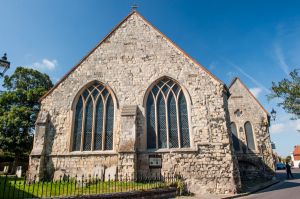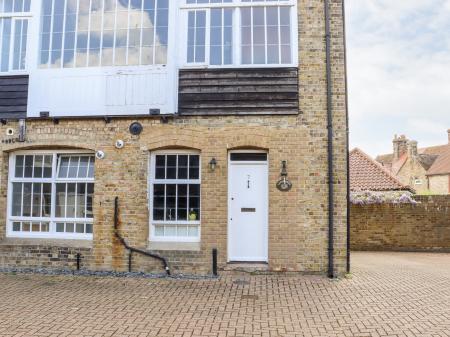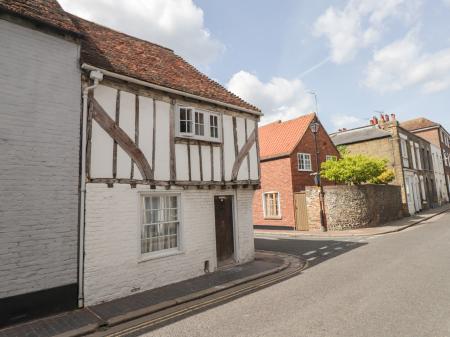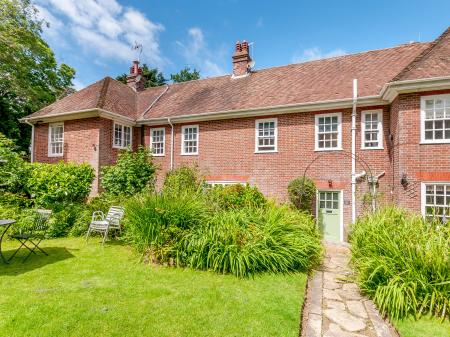
St Mary's also withstood a 1578 earthquake and had its tower collapse in the following century. After the tower collapsed, the nave and south aisle were re-roofed under a single span, supported by slender wooden columns of chestnut wood. The result is that the interior is almost barn-like, with an open, spacious feel most unlike a normal church. In 1718 a new tower of brick and timber was erected above the south porch.
The most intriguing feature in the interior is a floriated cross dating from 1333, one of only four such crosses known to exist in the county. In the chancel is an aumbry situated very high on the wall. This is believed to have been used to store a Latine cross said to contain the heart of St Bride.
HISTORY
Around 664AD Domneva, cousin of King Egbert of Kent, founded a convent on this site. Like so many places along the Kent coast, the convent was destroyed by the Danes, but in the early 11th century it was rebuilt by Emma, the wife of King Canute.
The Normans rebuilt St Marys in the early 12th century. The Norman arcades still survive, but many fragments of the Norman church are set in the exterior of the west wall. Between 1377 and 1399 the church was set afire by the French, but it was repaired by Sir William Leverick of Ash and his wife Emma.
A late 14th-century tomb recess for the couple stands near the north door. Near the 18th century pulpit is a section of medieval encaustic floor tiles and a second area of medieval tiles can be found at the west end of the nave.

At the west end is the 15th-century font (the date 1662 carved on the stem probably commemorates the re-erection of the font following the Commonwealth period). Beside the font are a pair of tomb chests to former mayors of Sandwich; Peter Nowell (d. 1694) and John Cricket (d. 1720).
Set against a nearby pillar is a 'Peter's Pence' box of oak, also 15th century. The striking altarpiece dates to 1756 and is formed in neo-classical style with an open pediment topped by a cartouche. It adds a touch of elegance to an otherwise subdued interior.
On either side of the altar, a number of wall monuments adorn the walls. Most of these date from the 18th and 19th centuries, though there is a quite worn monument to Abraham Rutten (d. 1608) on the north chancel wall. Near it is a tablet to his descendent, John Rutton, who served as vicar to St Mary's for more than 50 years and died in 1763.
In 1948 the three Sandwich parishes were merged, and St Clements was made the parish church, leaving both St Marys and nearby St Peters redundant. Both churches came into the care of the Churches Conservation Trust and are open most days during daylight hours.
Not surprising, given the barn-like, spacious interior, St Mary's is used for occasional musical performances. When we visited there were stacked chairs in one corner and a large wooden stage at the east end of the nave.






 We've 'tagged' this attraction information to help you find related historic attractions and learn more about major time periods mentioned.
We've 'tagged' this attraction information to help you find related historic attractions and learn more about major time periods mentioned.


